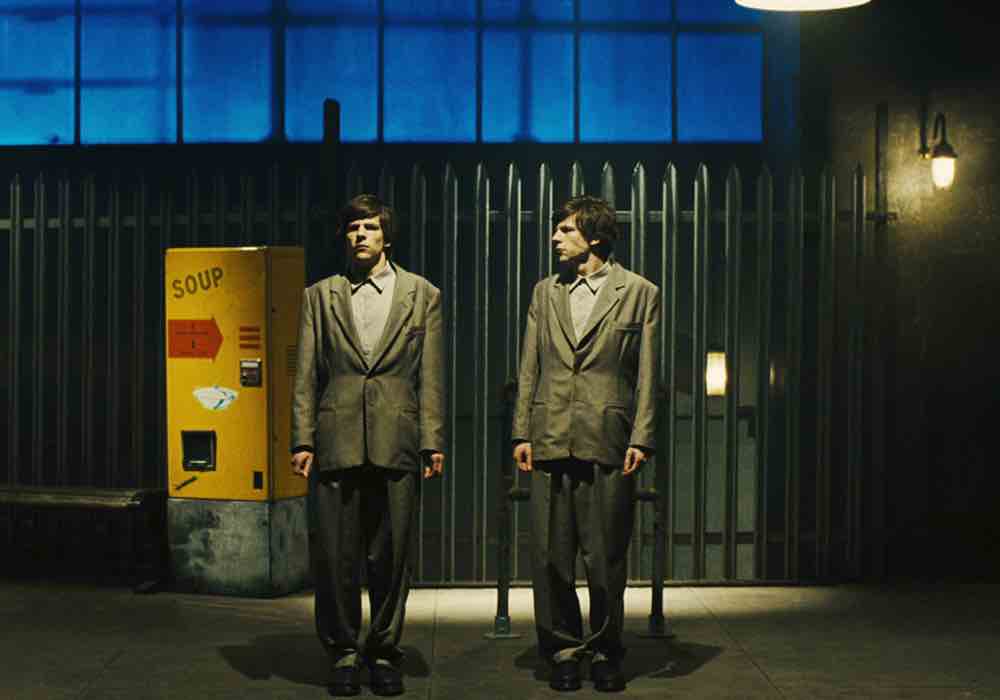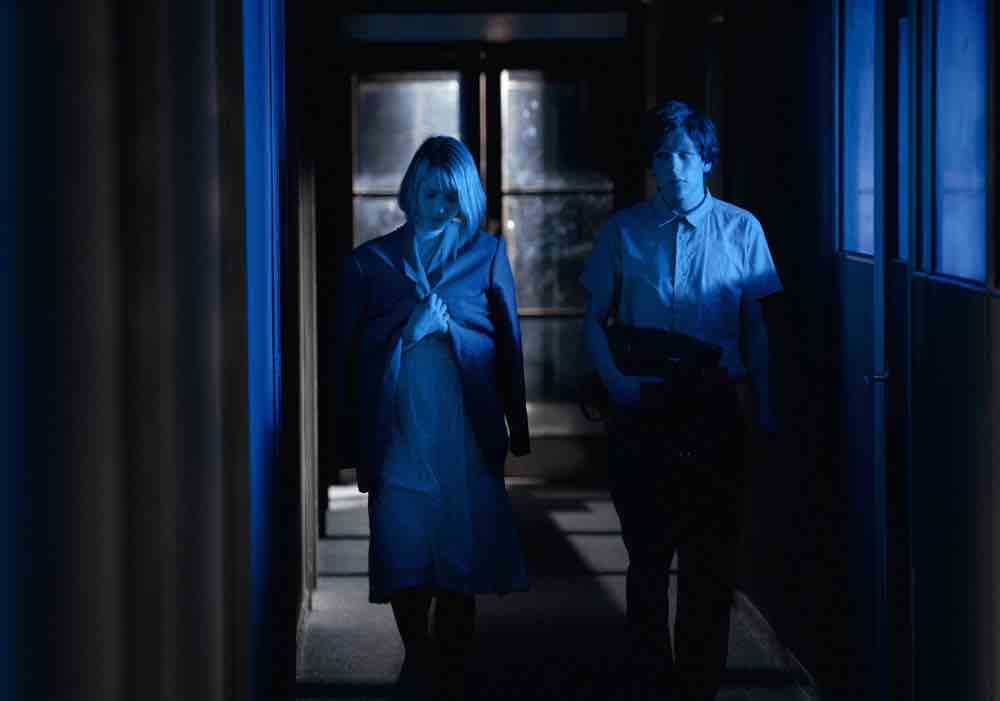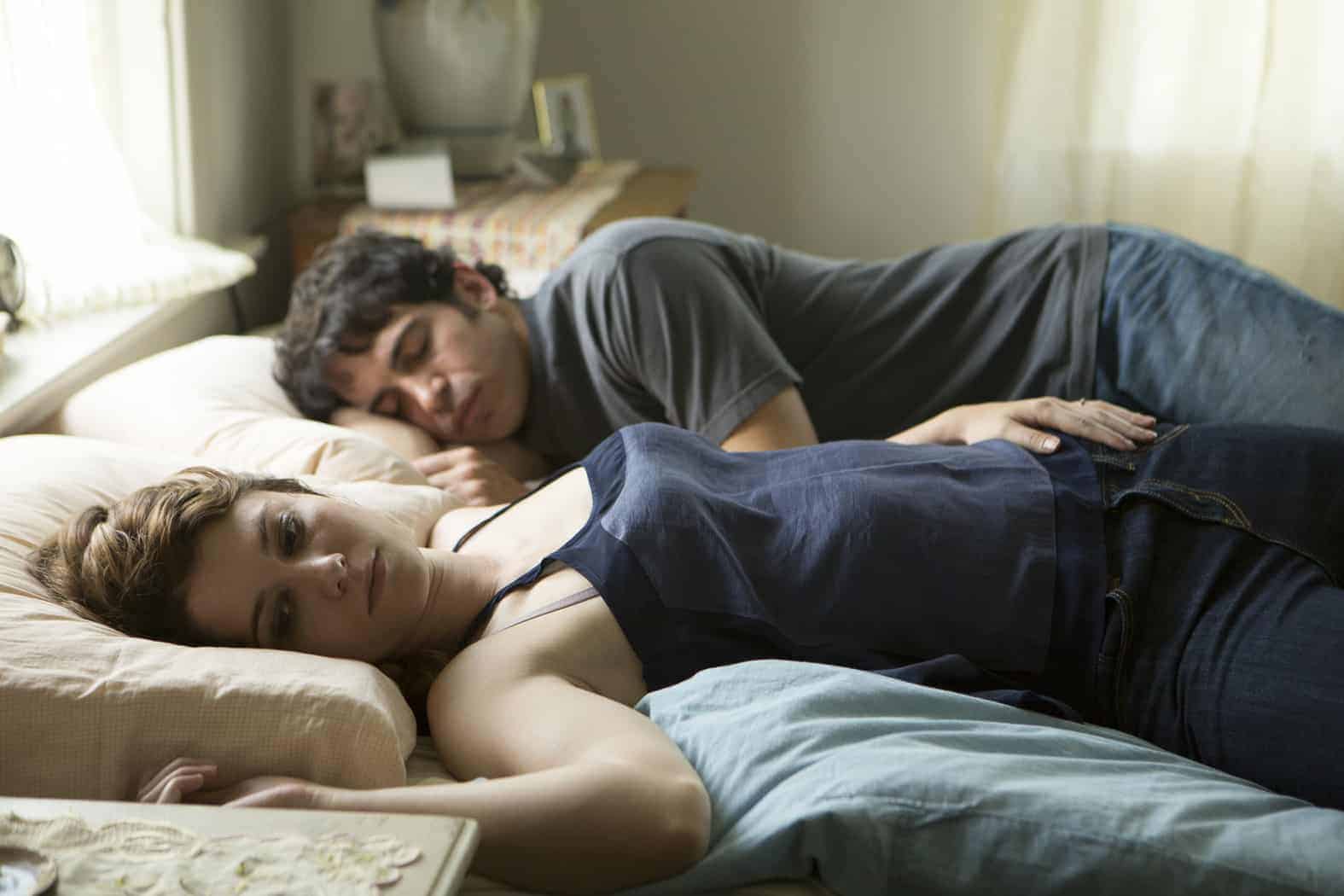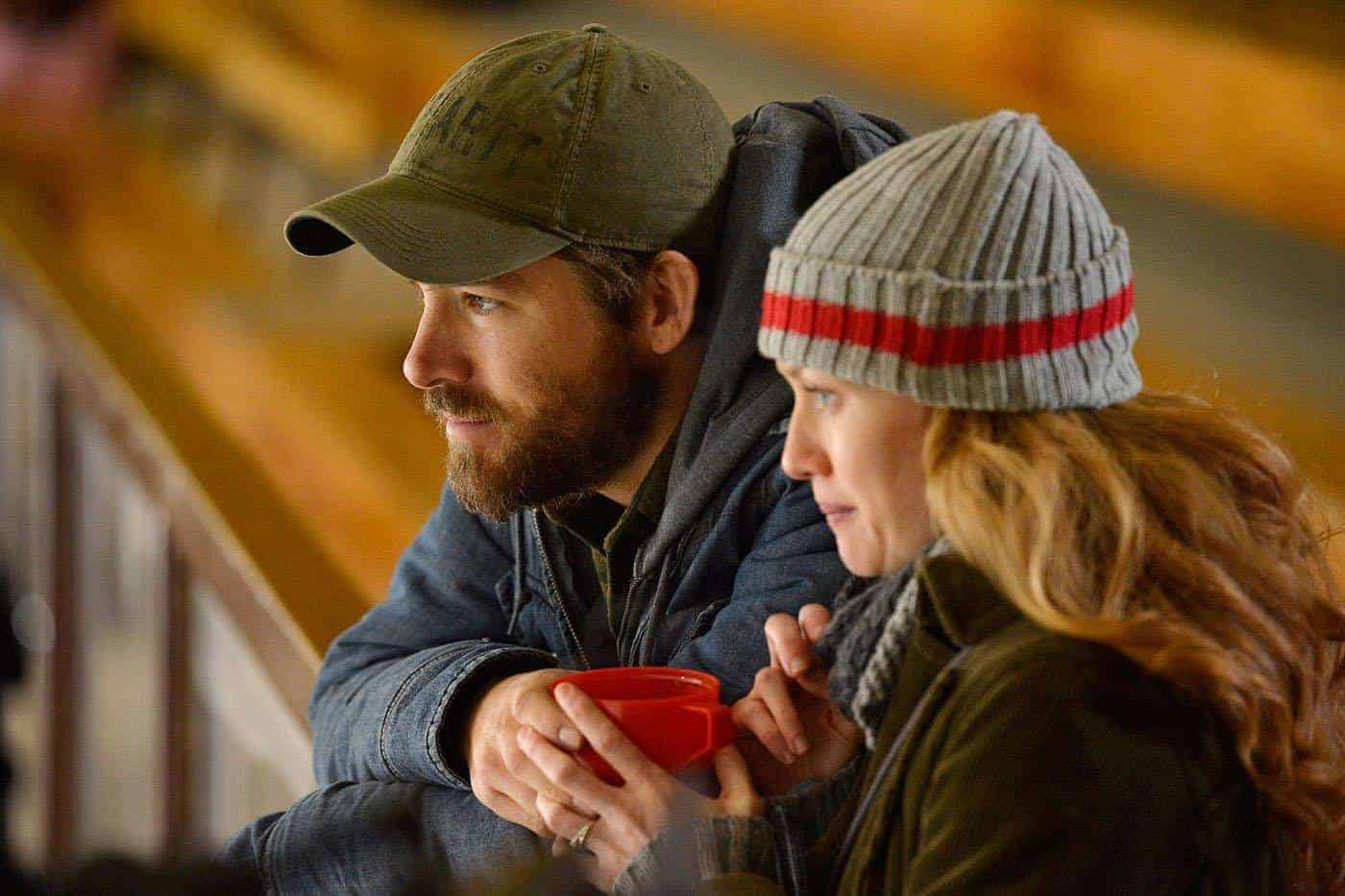
If this year’s pair of doppelgänger films, Enemy and The Double, are any indication, there’s an inherent problem with the concept. Because it requires that a personality be split into two people — two extremes — neither character can be a full person, which means you’re ultimately watching a film about two one-note characters: two sides of the same coin. Enemy made this palatable by constructing an intricate web of images and connections, to conflate the two men and keep it always unclear if what’s unfolding is a dream or a reality. Richard Ayoade’s The Double settles for a more emotionally satisfying, but less intellectually complex, story: when confronted with the more confident, boundary-less version of himself, who is trying to take over his life, Simon (Jesse Eisenberg) might just learn to overcome his fears.
The main reason to see the film is to watch Jesse Eisenberg navigate the two roles, switching between them without the luxury of costume changes: they both wear the same suit throughout. By changing his pacing, his posture, and how much space he takes up, Eisenberg effortlessly differentiates between the two, so that even if they decide to switch places, it’s always clear to the audience which double is which. Whether he’s sneering as James or falling over his words as Simon, he is an incredibly compelling on-screen presence.
The meeker double, Simon (Jesse Eisenberg), is our hero, a well-intentioned loner with the emotional maturity of a boy, who pines after his neighbour and co-worker, Hannah (Mia Wasikowska), both endearingly and creepily. The more dominant double, James (Jesse Eisenberg), shows up as a new employee where Simon has worked for seven years, and instantly wins everyone over: nobody even notices or cares that they share a face and body. Simon is just so unremarkable.

The film is at its best in the scenes where Simon and James first interact, often finding sardonic humour. Simon sees the more confident James as a potential friend and confidant: they look the same so surely James will understand him. There are a couple of wonderful scenes, with top notch acting here by Eisenberg, where the pair go out for dinner, drinks, and ride the subway together. James appears to be interested in helping Simon, and Simon opens up, unable to sense that James may have ulterior motives, which could cost Simon almost everything. It’s this potential loss, particularly of the girl he loves, that pushes him to take an active role in his own life.
Because Simon has good qualities, he gives us something to root for, unlike the two utter assholes in Enemy. When faced with what seems to be a better version of himself, he’s forced to confront his issues and do something about them. Since Simon’s struggles are mostly about finding his confidence and dispensing with his passiveness, his character arc is a bit thin, and while it comes to a satisfying conclusion, not a whole heck of a lot has really happened.
Director Richard Ayoade (Submarine) meticulously constructs this dystopian world where two identical doubles could plausibly go unnoticed. The original score by Andrew Hewitt, and the Japanese pop tunes which complete the soundtrack, set the tone. Production designer David Crank creates sets that are neither of this time nor the past nor the future. Simon’s workplace looks like a bunker, full of cubicles without windows. The machines in the office look retro, with their giant colour-coded buttons, but seem to have the power of something futuristic. The massive apartment block where Simon lives in a tiny room with a cot and a desk, and the rickety subway he takes to work, recall Soviet Russia; the film is actually based on a nineteenth century Dostoyevsky book. And Cinematographer Erik Wilson gorgeously lights the space so that it’s nice to look at but clearly oppressive: he makes liberal but good use of yellow lights at work, and blue nights for the eerie goings-on at night. But aside from being altogether great to look at and listen to, the backdrop doesn’t much add to the story, which is a missed opportunity.

